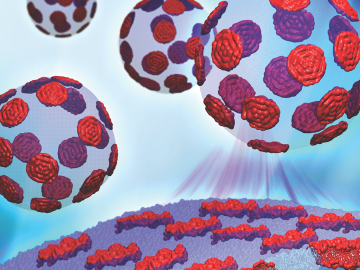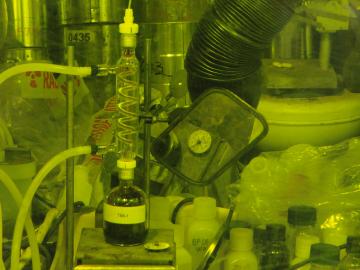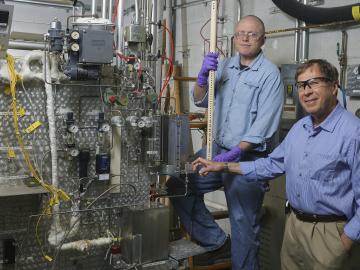
Filter News
Area of Research
- Biology and Environment (36)
- Biology and Soft Matter (1)
- Clean Energy (34)
- Climate and Environmental Systems (1)
- Computer Science (1)
- Electricity and Smart Grid (1)
- Functional Materials for Energy (2)
- Fusion and Fission (11)
- Isotopes (1)
- Materials (31)
- Materials for Computing (3)
- National Security (21)
- Neutron Science (13)
- Nuclear Science and Technology (5)
- Renewable Energy (1)
- Supercomputing (43)
News Type
News Topics
- 3-D Printing/Advanced Manufacturing (4)
- Advanced Reactors (1)
- Artificial Intelligence (7)
- Big Data (5)
- Bioenergy (16)
- Biology (19)
- Biomedical (3)
- Biotechnology (2)
- Buildings (5)
- Chemical Sciences (7)
- Clean Water (2)
- Climate Change (21)
- Composites (1)
- Computer Science (13)
- Coronavirus (3)
- Critical Materials (1)
- Cybersecurity (5)
- Decarbonization (15)
- Energy Storage (11)
- Environment (29)
- Exascale Computing (4)
- Frontier (5)
- Fusion (5)
- Grid (3)
- High-Performance Computing (10)
- Hydropower (3)
- Isotopes (1)
- ITER (1)
- Machine Learning (5)
- Materials (15)
- Materials Science (10)
- Mercury (1)
- Microscopy (8)
- Nanotechnology (5)
- National Security (9)
- Net Zero (2)
- Neutron Science (4)
- Nuclear Energy (6)
- Partnerships (2)
- Physics (4)
- Polymers (1)
- Quantum Computing (5)
- Quantum Science (3)
- Security (3)
- Simulation (4)
- Space Exploration (1)
- Summit (5)
- Sustainable Energy (14)
- Transformational Challenge Reactor (1)
- Transportation (5)
Media Contacts


Scientists at the Department of Energy’s Oak Ridge National Laboratory are taking a closer look at how sturgeon, a prehistoric — and now imperiled — group of fish species may better be helped to get around the dams that block their migrations. Hydropower is a major renewable ener...
![In unbound calyx[4]pyrrole, two pyrrole “petals” are flipped up and two, down. In unbound calyx[4]pyrrole, two pyrrole “petals” are flipped up and two, down.](/sites/default/files/styles/list_page_thumbnail/public/news/images/anion_hr5_0.jpg?itok=sGtLzH0E)
Atomic charges in chemical solutions are like Switzerland—they strive for neutrality. The tendency to balance charges drives dynamics when charged atoms or molecules, called ions, are present in solutions. Recently, researchers at the Department of Energy’s Oak Ridge National Laborat...


Frank Loeffler, University of Tennessee (UT)-Oak Ridge National Laboratory Governor's Chair for Microbiology and Civil and Environmental Engineering, has been elected fellow of the American Academy of Microbiology.

Rare earth elements are metals used in technologies from wind turbines and magnetic resonance imaging agents to industrial catalysts and high-definition televisions. Most are lanthanides, elements with atomic number from 57 to 71, lanthanum to lutetium, in the periodic table. The la...


Nearly 100 commercial nuclear reactors supply one-fifth of America’s energy. For each fuel rod in a reactor assembly, only 5 percent of its energy is consumed before fission can no longer be sustained efficiently for power production and the fuel assembly must be replaced. Power plan...


A study led by the University of Tennessee and the Department of Energy’s Oak Ridge National Laboratory could soon pay dividends in the development of materials with energy-related applications. Three UT researchers—Maik Lang, assistant professor


